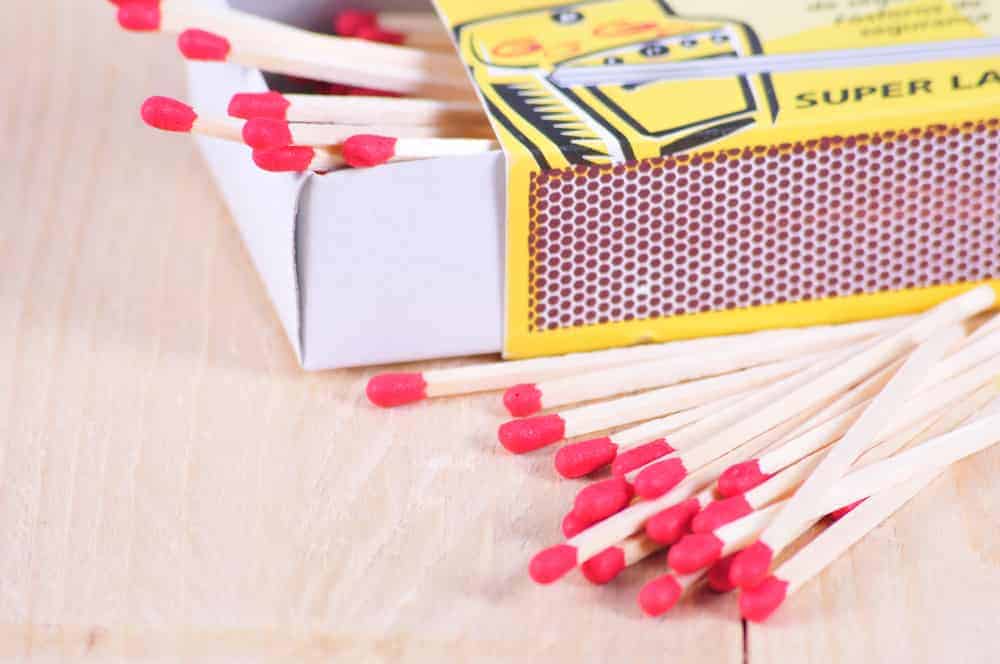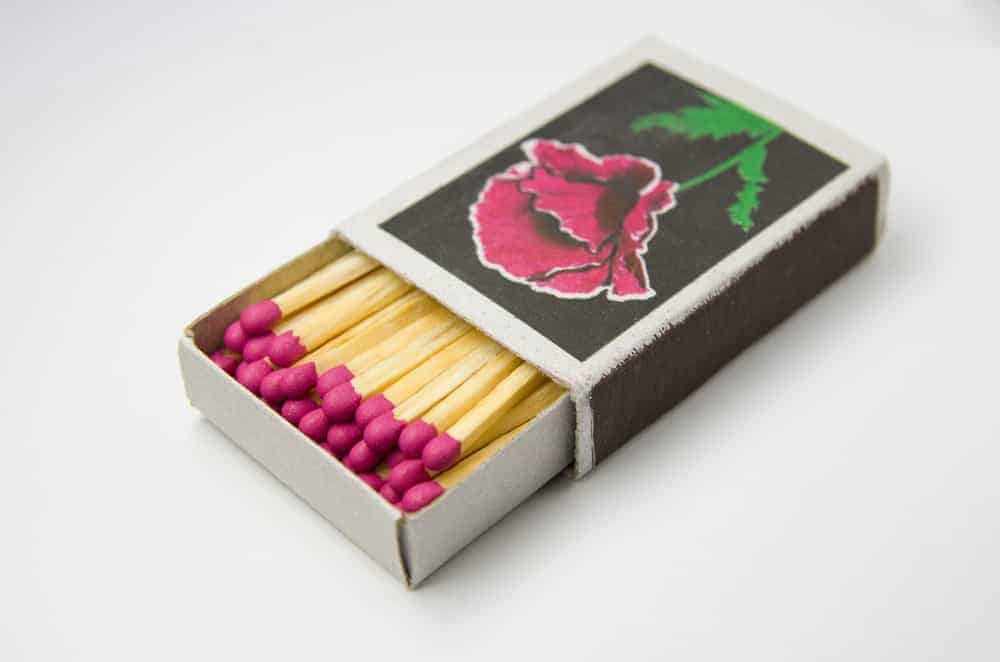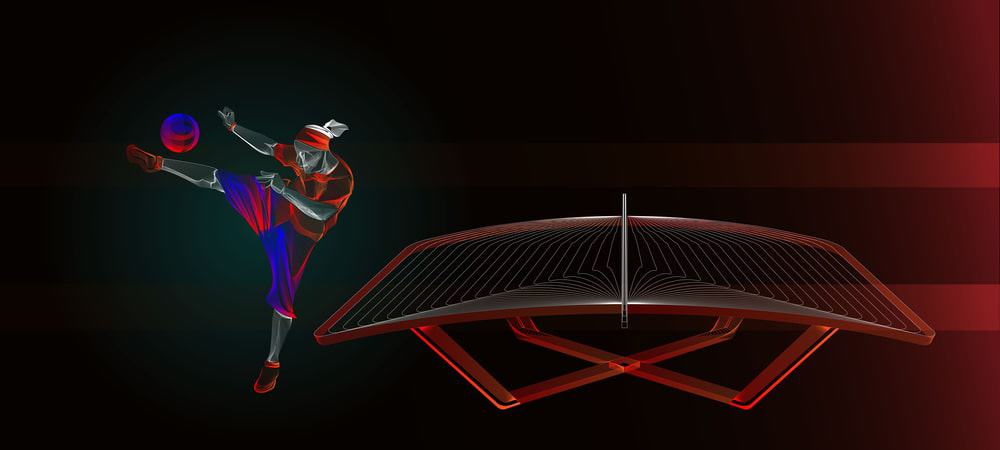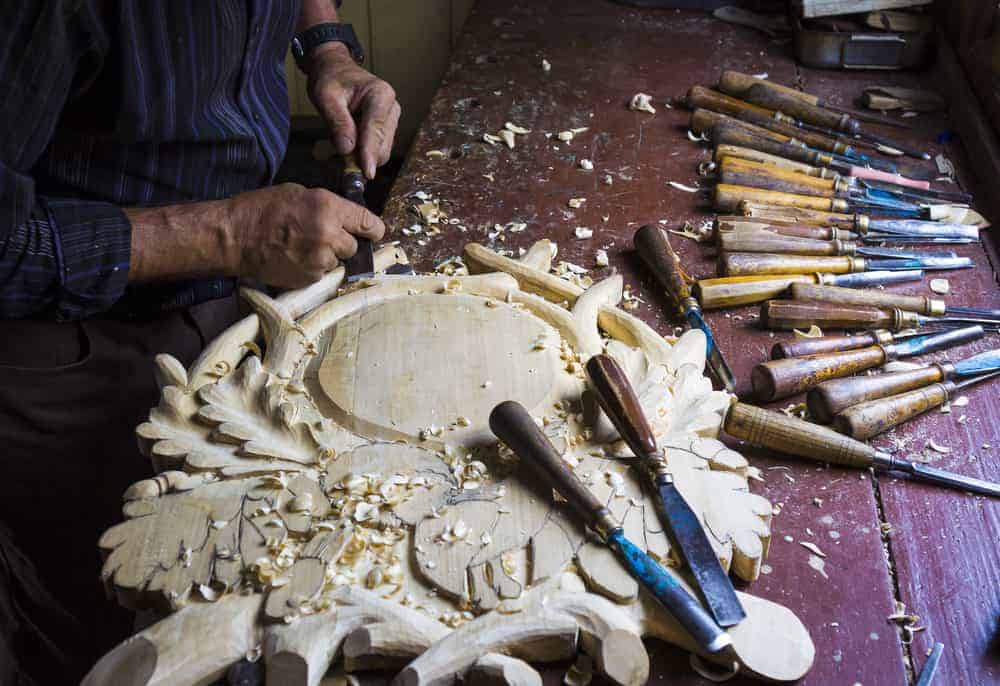Phillumeny: The Awesome Hobby You’ve Never Heard Of
What is Phillumeny?
Phillumeny is the word for the art of matchbook collecting. The word was invented by British collector Marjorie S. Evans in 1943, and is derived from the Greek “Phil” or love, and the Latin “Lumen” or light.
Matchbooks seem like a common household item, but they have a rich history that parallels that of America and collecting the different cover designs and artwork is a hobby beloved by many!
There are many different types of matchbook collectors, or Phillumenists – some collect matchbooks based upon the company that made them, such as Diamond. Some seek matchbooks from amazing world events – such as the 1933 World Fair. Others seek to get a full set of a particular matchbook art collection, such as the infamous “girlies” matchbooks that were printed for Playboys 242 clubs.
Whatever you decide that interests you will probably lead you to many more like-minded Phillumenists. Read on to learn more about this unique hobby of Phillumeny.
The History of the Matchbook
The matchbook seems like the kind of thing that has been around forever – either sitting in a bowl at the local diner or for sale with a pack of cigarettes. But the matchbook is actually a relatively new invention.
Lawyer Joshua Pusey patented paper matches, stapled to cardboard and tipped with sulfur and phosphorus, in 1892. The Diamond Match Company purchased the patent in 1894 (fun fact– Joshua Pusey went on to become Diamond Match Company’s attorney for the rest of his life!)
In 1894 Pabst Beer ordered 10 million matchbooks featuring ads for their beer on the cover from Diamond Salesman Henry Truante, and the decorative matchbook cover was born! Tobacco maker Bull Durham followed suit with 30 million matchbooks featuring advertisements for his tobacco.
But the industry quickly ran into a snag – early matchbooks were dangerous. The friction or ignition strip was right inside the cover next to the rest of the matches. What was meant to be an easy way to light a cigarette would quickly turn into a fireball.
To fix this, Henry Truante ordered the friction strip moved to the outside and added a warning label “Close Cover Before Striking” to all their matchbook covers – a warning that stays to this day.
Record Breaking Phillumenists
Matchbook collecting has enjoyed popularity for centuries. According to the Guinness Book of World Records, the largest matchbook collection in the world belongs to Steven Smith in the UK, who, as of September 6, 2013 has 20,736 matchboxes and 1,054221 different matchbox labels from over 130 countries!
The Rarest/ Most Expensive Matchbook Collections
Collecting matchbooks doesn’t necessarily mean that you only search for vintage, rare, or expensive matchbooks. Most Phillumenists look for matchbooks that have art that appeals to them, complete sets, or matchbooks from historically significant events.
That being said, the most expensive matchbook to date is one from the Charles Lindbergh dinner of 1927 – it sold for 6,000 dollars at auction in 2015. Other expensive Matchbooks include rare, well -preserved matchbooks from historical events such as the “Century of Progress World Fair” in Chicago, in 1933.
Where Can I Buy Unique Matchbooks for my Collection?

Back in the halcyon days of Phillumeny, matchbooks were found everywhere and collecting them was easy. These days it requires a little more legwork to find interesting, rare, and unique matchbooks – but the hunt is part of the fun! Read on to learn the best places to find matchbooks for your blossoming Phillumeny hobby.
Best Places to Find Matchbooks
● The Internet: New Phillumenists may be tempted to head right to eBay, which is a valid option, but sometimes too many choices can feel overwhelming and it is hard to get into the hobby without physically seeing the matchbooks first.
● Join a Club: Arguably the best way to find rare and vintage matchbooks, joining a Phillumenist club allows you to interact with other people with similar interests to swap, sell and trade matchbook covers while learning more about the hobby itself.
● Auctions: Many collectors clubs hold auctions either in person or online, which is a great way to expand your matchbook collection. These auctions are far from the most inexpensive option – auctions by collectors tend to be pricey as everyone knows the worth of the items for sale. However, auctions and official Antique Dealers are a great way to track down a very specific item, as long as you are willing to pay the price.
● Swapping: Some Phillumenist communities encourage label swapping – where you give a collector a few matchbook covers in return for a few of theirs. This is both a great way to get into the hobby as well as a good way to make some new friends, as long as the code of conduct is followed and you understand that you “get what you give.” Dirty, torn, or otherwise undesirable matchbooks will probably be returned in kind.
● Vintage and Antique Shops: Part of the joy of any collector hobby is the thrill of the hunt! Those new to hobby Phillumeny should consider combing through local antique shops, vintage shops, and even flea markets – it may be more work, but the satisfaction of “striking gold” is well worth it!
The Wonderful World of Phillumenists Clubs
The best way to find unique and interesting matchbooks for your collection is to join a Phillumenist club. There are many different types, such as the international club British Matchbox Label and Bookmatch society, which was founded in 1945 and has a lot of great resources for beginner Phillumenists.
From there you can learn more about local Philumentist auctions, both in person and online, as well as events. There is even a magazine where you can keep up!
How Should Collectable Matchbooks Be Stored?
Like any collector’s item, the preservation and care of matchbooks affect their value and longevity. When looking for matchbooks to add to your collection avoid any with noticeable defects, such as rips, burn marks, or mold.
It is also good to be on the lookout for any covers that are flat and crease-free – they could have been sales samples which are not considered collectible.
Most Phillumenists do not keep the matches, only the artwork. To discard the matches from your matchbook for storage, carefully remove the staples that keep the matches on the cover with a knife or tweezers. Consider practicing this maneuver on some newer matchbooks before moving on to vintage ones.
Once the cover has been removed it can be folded flat and stored in a binder, drawer, etc away from moisture and direct sunlight. Many collectors keep their matchboxes in three-ring binders so they can be easily transported.
Different Types of Matchbooks

Not all matchbooks are created equal! There are different styles of matchbooks that came about in different eras. One of the most popular styles of matchbooks among Phillumenists is the single-top label, which was once the most popular type of matchbook in the UK.
The artwork on these matchbooks can be easily lifted off and laid flat, which was convenient for early Phillumenists.
Americans are likely more familiar with matchcovers, which are folded strips of cardboard featuring artwork with a strip of paper matches inside. These are especially good for collectors looking for matchcovers from famous bars and restaurants in the United States.
There are other, more rare types of matchbook covers as well, such as the now defunct all-around labels, which were used in the UK from the 1800s until the 1970s when they were phased out for more modern designs that had artwork printed directly on the card.
Don’t let the different styles make you think you need to be a purist – many Phillumenists seek matchbooks for their collections based on the artwork alone, and mixed collections are welcome and encouraged!
Early Matchbook Art
Phillumeny is completely subjective – collectors should be on the lookout for matchbook art or collections that appeal to them, whether they be modern or vintage. Those looking for vintage matchbook covers should keep their eyes peeled for certain matchbook covers from specific time periods.
For example, early matchbook makers loved to feature new and exciting technology of the time, such as the first airplane, trains (or locomotives), and automobiles. These fun pieces of art are also a testament to a bygone era.
Victorian British collectors coveted matchbook covers from far away and “exotic” lands, featuring animals and plants from places like India, South America, and China. Around 1900 matches began to be used as both advertisements and propaganda, and during both WWI and WWII propaganda matchbooks were created.
Phillumeny Still Going Strong
In 1932 the Zippo lighter was invented, which spelled the beginning of the end for the matchbook. As lighters became cheaper and easier to use, the market for matches quickly dried up. Soon only a few companies produced matchbooks more focused on quality than art or advertising.
When the dangers of smoking were revealed in the 1970s even fewer matchbooks were purchased, and slowly the industry ground down… but that is not to say the matchbook is gone! It has just gone the way of vinyl records, vintage clothing, and other retro novelties.
Phillumeny is a wonderful hobby to get into. Not only is it affordable, transportable and easy, but Phillumeny is also fun and has a rich history and culture. Consider checking out some vintage shops and message boards, and start your matchbook collection today!










